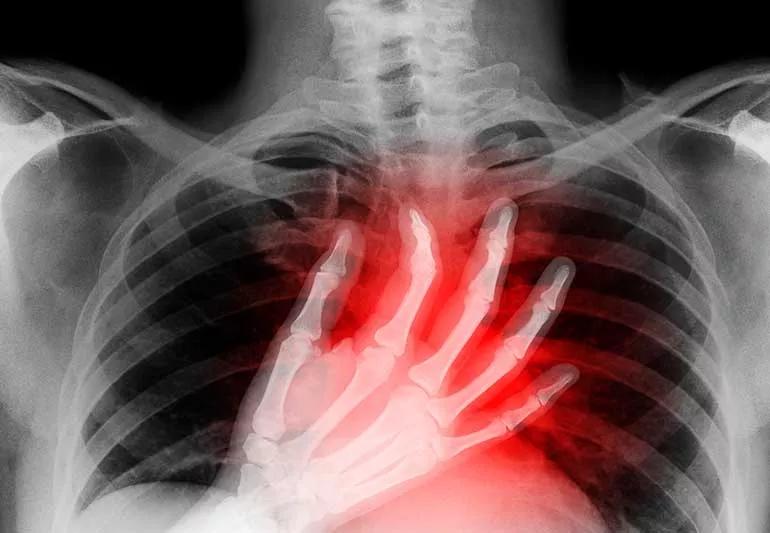One is caused by an electrical issue, while the other is caused by blocked arteries

When it comes to cardiac arrest versus a heart attack, it can be easy to get them confused. You may be wondering, Is cardiac arrest the same as a heart attack?
Advertisement
Cleveland Clinic is a non-profit academic medical center. Advertising on our site helps support our mission. We do not endorse non-Cleveland Clinic products or services. Policy
Both a heart attack and cardiac arrest can be scary and life-threatening medical conditions affecting your heart, but there are differences in how and why they occur.
A heart attack is caused by a blockage. It happens when an artery blocks the blood flow to your heart.
Cardiac arrest is an electrical issue. It occurs when quick, irregular impulses take over your heart’s rhythm.
And while most people will survive a heart attack, cardiac arrest is something that few people survive. It’s important in either case that you act fast and call 911.
Cardiologist Andrew Higgins, MD, explains how a heart attack and cardiac arrest develop in different ways and what you should do in each emergency.
Myocardial infarction, commonly referred to as “a heart attack,” can be deadly. In most cases, plaque clogs the arteries that supply blood to your heart. Without oxygen and nutrients, your heart’s muscle tissue can start to die. The goal is to return blood flow to your heart as quickly as possible — if not, a heart attack can lead to permanent damage and even death.
About 635,000 people in the United States experience a heart attack for the first time each year.
Key factors that can increase your risk of having a heart attack are:
Advertisement
By contrast, in cardiac arrest, your heart starts racing in a confused, disorganized way. Blood stops circulating almost immediately. You pass out, stop breathing and have no pulse. Unless your heart rhythm is restored as soon as possible, your brain starts to die from a lack of oxygen and blood flow. Fewer than 10% of people who experience sudden cardiac arrest survive.
In the U.S., cardiac arrest happens to more than 356,000 adults in a non-hospital setting.
An abnormal heart rhythm can be caused by the following:
Some heart attack symptoms are more common than others. Although most people experience chest pain in association with a heart attack, it’s important to remember that not every heart attack presents “classically,” and some people — particularly women, people who are diabetic and people who are older — may also develop “atypical” symptoms with their heart attack, such as abdominal or back pain, or even having minimal to no symptoms.
Symptoms can include:
“Patients in these groups are less likely to present with chest pain and more likely to have fatigue and insomnia, as well as shortness of breath,” says Dr. Higgins. “Nausea, vomiting and pain in your back and shoulders may also occur — don’t miss these red flags.”
Cardiac arrest symptoms can include:
“Cardiac arrest symptoms typically start without warning,” states Dr. Higgins. “You may or may not experience chest pain before you faint and become unconscious.”
If you or someone else is experiencing symptoms of a heart attack or cardiac arrest, act fast. Call 911 immediately. Don’t attempt to drive yourself or others to the emergency room. First responders are trained to assess the situation and provide treatment on the way to the hospital.
If you suspect a heart attack, and if you or the person with symptoms have been prescribed chest pain medication, take it. If you haven’t been prescribed any chest pain medication, slowly chewing 325 milligrams of aspirin may help reduce damage and prevent blood clots from forming.
Advertisement
It’s vital that you act quickly. Brain damage from cardiac arrest starts just after five minutes of losing consciousness, and cardiac arrest can be fatal if CPR (cardiopulmonary resuscitation) isn’t started within eight minutes.
If you think someone is having a cardiac arrest, start CPR. Ask someone to find an automated external defibrillator (AED) to restart their heart.
“In cases with a sudden fatal heart rhythm, timely defibrillation could mean the difference between walking out of the hospital or dying — rapid application of an AED is critical,” stresses Dr. Higgins. “If you’re reading this and are unsure how to perform CPR or use an AED, many places like the American Heart Association, local schools, libraries and fire departments offer courses — you could save a life by preparing yourself now.”
Advertisement
Learn more about our editorial process.
Advertisement

Preventive steps to take plus what to do in an emergency

Common symptoms include chest discomfort, shortness of breath, nausea and profuse sweating

If you have other cardiac symptoms, and antacids aren’t working, it’s time to call emergency services

Calling 911 or emergency services should always be your first step

Mild heart attacks may cause less damage, but they can still lead to serious complications and require medical attention

Up to 30% of people who take the cholesterol-lowering medication feel aches and soreness

Congenital heart disease, genetic conditions and unhealthy lifestyle habits can put teens at higher risk for heart attack

Recognizing subtle symptoms, like unusual fatigue or fleeting episodes of chest pain, could be key to survival

Start having sex about 72 hours before ovulation, then at least every other day during your fertile window

Attachment theory suggests that your earliest relationships shape connections throughout your life

It isn’t a recognized mental health disorder, but research shows that problematic social media use can negatively affect your mental health, self-esteem and sleep